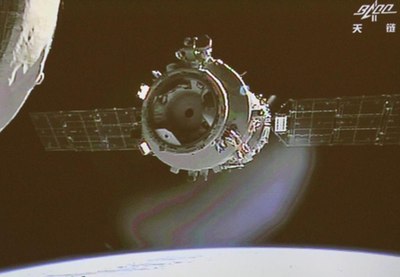East-west space race or space cooperation?by Ayodele Faiyetole
|
| China has joined the elite class of the US and Russia in the field of space stations and spaceflight in general. |
China’s first crewed mission for their space station program also features another milestone: the first Chinese woman in space. Thus, to emphasize the place of gender in human spaceflight, China too, has speedily joined the league of countries with women in space. Taikonaut Liu Yang, a 33-year-old Air Force pilot, became China's first woman in space exactly 49 years to the day after the launch of the first woman in space, Valentina Tereshkova of the Soviet Union.
It is not a secret what China can or wants to achieve for space. They have made a very impressive shot at their goal, and seem determined to dream bigger and make good their dreams. China has indeed arrived on the bench of the old order, joining the elite class of the US and Russia in the field of space stations and spaceflight in general.
East-west space race or east-west space cooperation: future of human spaceflight
What is the importance of this achievement for China and the international space community, especially in the spaceflight circle? China’s standing will definitely build up, with a possibility of the ISS stakeholders opening their arms to China for some kinds of cooperation. However, considering the degree of the existing wars of interest between the US and China, there’s also the potential for the re-enactment of an east-west space race, reminiscent of the erstwhile Cold War between US and the Soviet Union. However, this does not preclude the possibility of a similar race between China and other members of the East, notably Russia (arguably on the eastern bloc), even though the existing paradigm tends to suggest the pre-eminence of America in the space exploration enterprise. There have already been debates on the Asia space race between China and India. However, this regional race at the level of Asia has now been undermined by China with this new and impressive spaceflight record. The only possibility at this juncture, therefore, is a global, and the top of the echelon competition with the masters of the human spaceflight game: US and Russia.
Both an east-west space race or possible east-west space cooperation has advantages and disadvantages. For instance, the space power now gained by China, if directed against settling issues negatively, may mean a doom time for humanity. For a peaceful space race, devoid of the use of anti-satellite and other aggressive gimmicks and technologies, the global community will be there to make real gains, just as we experienced during the Cold War period: breaking the ranks with far-fetched goals, and going beyond perceived limits to achieving those goals in record times.
| Both an east-west space race or possible east-west space cooperation has advantages and disadvantages. |
On the other hand, with east-west space cooperation, leaving this earthly cradle may happen faster and easier than ever anticipated. Taking a cue from the success of the ISS so far, international cooperation will achieve faster and better results for deep space exploration. On the political front, however, there’s bound to be stricter challenges forging such cooperation, but if formed, it may yield greater benefits for humanity’s future in outer space.
The old versus the new
The current space era can be seen as a clash of established and emerging space groups. Who are the ones in the new group? The ones typified by the Dragon, SpaceX and China, are new, yet both actually benefit from a mix of new and old approaches, such as, in China’s case, more traditional government-led programs. This mix of the new and old order is the future of spaceflight. NASA has demonstrated vision in this context by inviting the private entities into the business of cargo transportation and human spaceflight, providing support for SpaceX and other companies alike on the these programs. This is a new paradigm shift of having the public and the private, the old and the new order, pursing together a future in space exploration. Of course, this is also to allow NASA to concentrate on other programs, like developing the new Space Launch System heavy lift-rocket.
In an earlier piece, “Newt’s New Frontier”, I analyzed Newt’s Gingrich bold plan of a public-private partnership (PPP) method to develop a space colony. Some combination of a PPP, joint efforts of the new and old orders, and either east-west space cooperation or a peaceful east-west space race, seem to me are the best possible ways to achieving a harmonious future in space.
